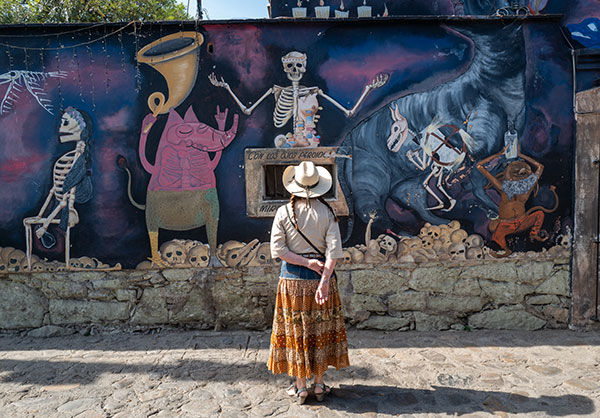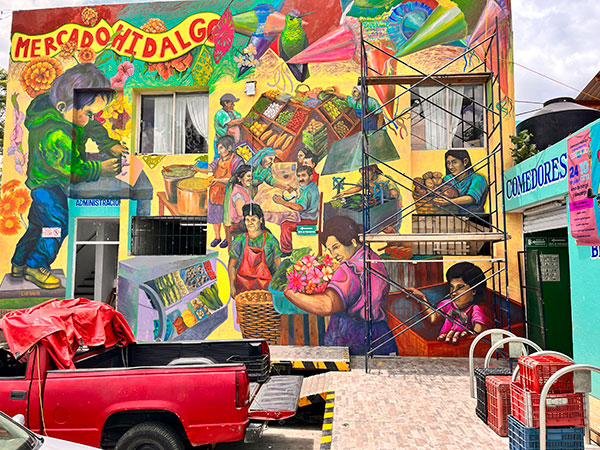Amy and I share a studio at our home in Oaxaca, Mexico. Our approaches to painting are very different and we both admire each other for the unique abilities we bring to creation. Being with Amy when she makes her masterpieces is enthralling and perplexing both.
Amy usually begins work without a clear idea of what will arrive in the end. The entire process is a journey of discovery which she refers to as a ¨conversation¨. It is as though she opens herself to the power of energetic vibration and then uses that to bring forth visions and stories.
I am amazed at the potent stories that are told in her paintings. My frustration is when I see her come and go from her work, which she does frequently. She gets something done and walks away, sometimes for a day or so, only to come back and change it. She insists she does this at the painting´s request. She is self taught and has to see her work in stages⏤fine tuning all along.
My paintings take much less time to accomplish than Amy’s. I have a degree in fine art with much academic training. Over the years I mastered my techniques and work with strong impulse, not second-guessing as I go along.
Amy has done very well in her art career and has more recognized achievements and awards than I during her forty years of art making. It is because she is pure in her creation.
Here in Mexico, we both have been inspired by the culture and our art reflects some new paradigms.
Amy has just completed a fine example: called,
La Sagrada Herencia de Madre Maiz. ¨The Sacred Inheritance of Corn Mother¨
She says: ¨Since childhood, I have felt a connection to the jeweled colors of corn, and throughout my life, it has become a totem symbol that represents me. I felt a deep sense of reverence while bringing this prayer to life."
"In my painting, the vital force, coming from the potent world of Spirit is also in the memory and breath of our Ancestors. The Human Being; in this case, a child wrapped in Guadalupe´s rebozo is open to receive the gifts / blessings that surround her.
And, Corn, the staple of life, is the heartbeat of it all.”
For more : Amy Córdova Art




















































